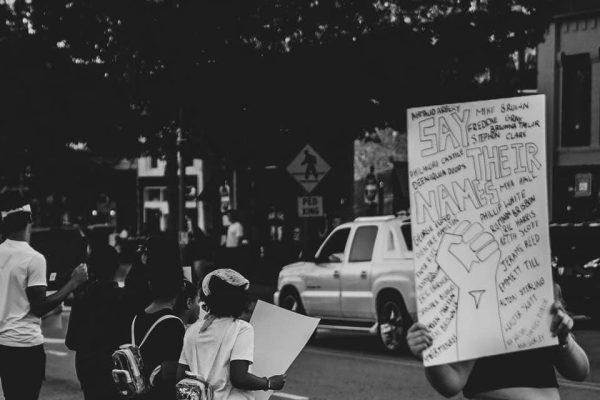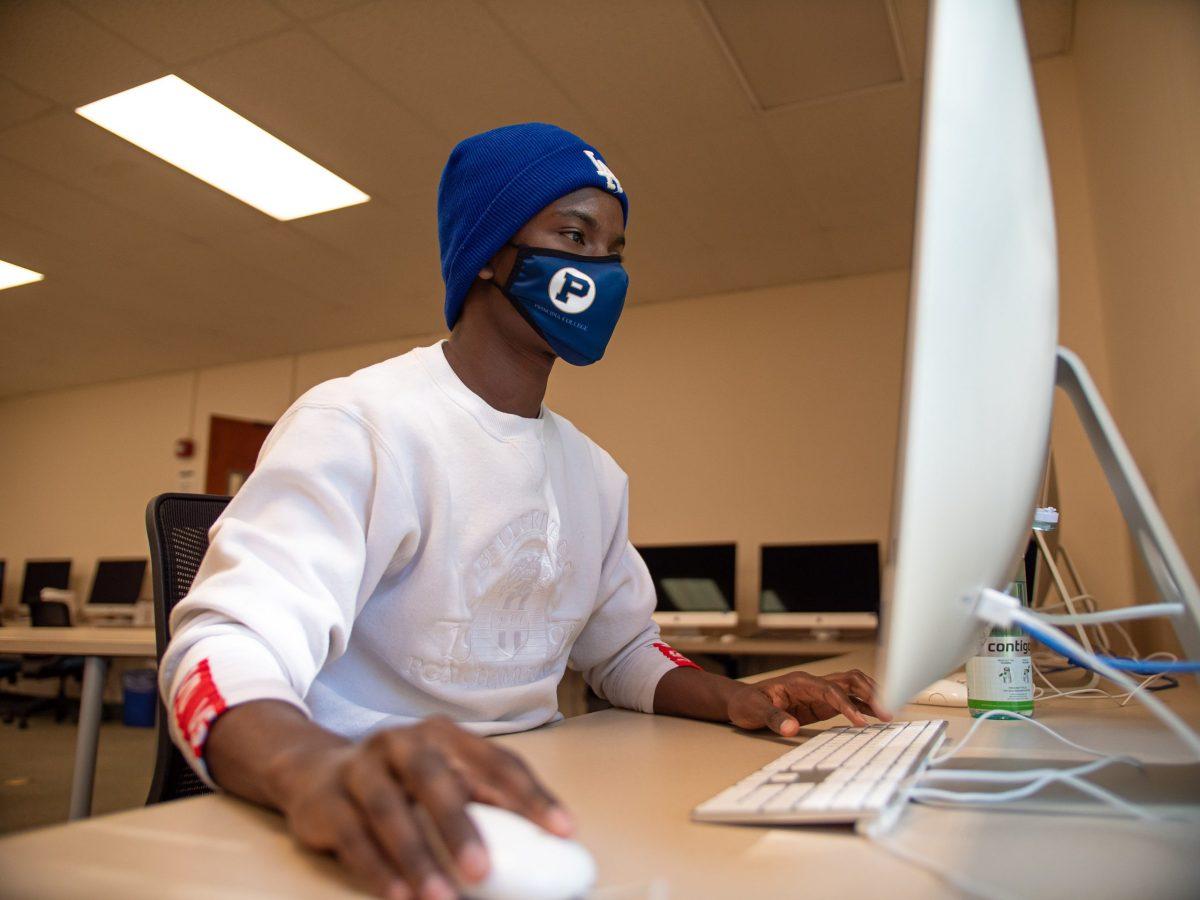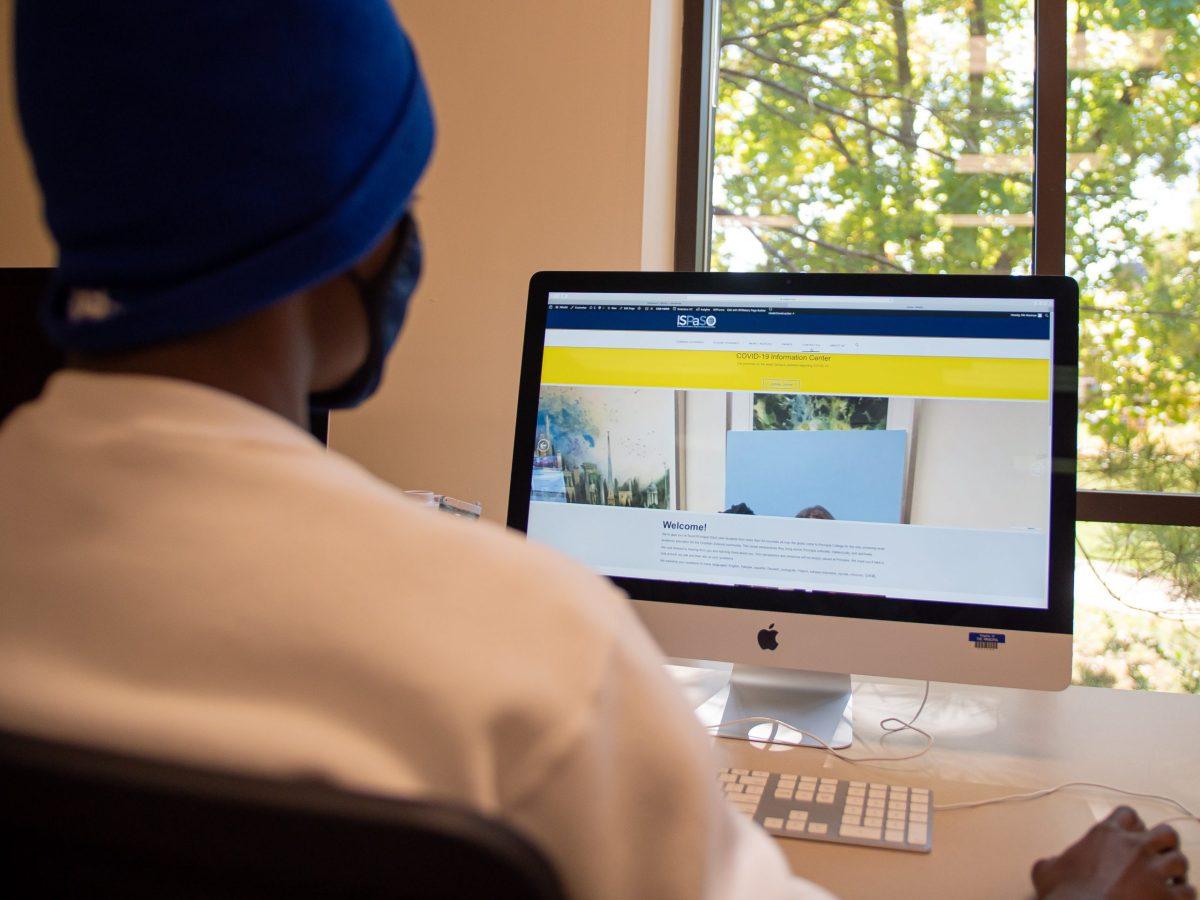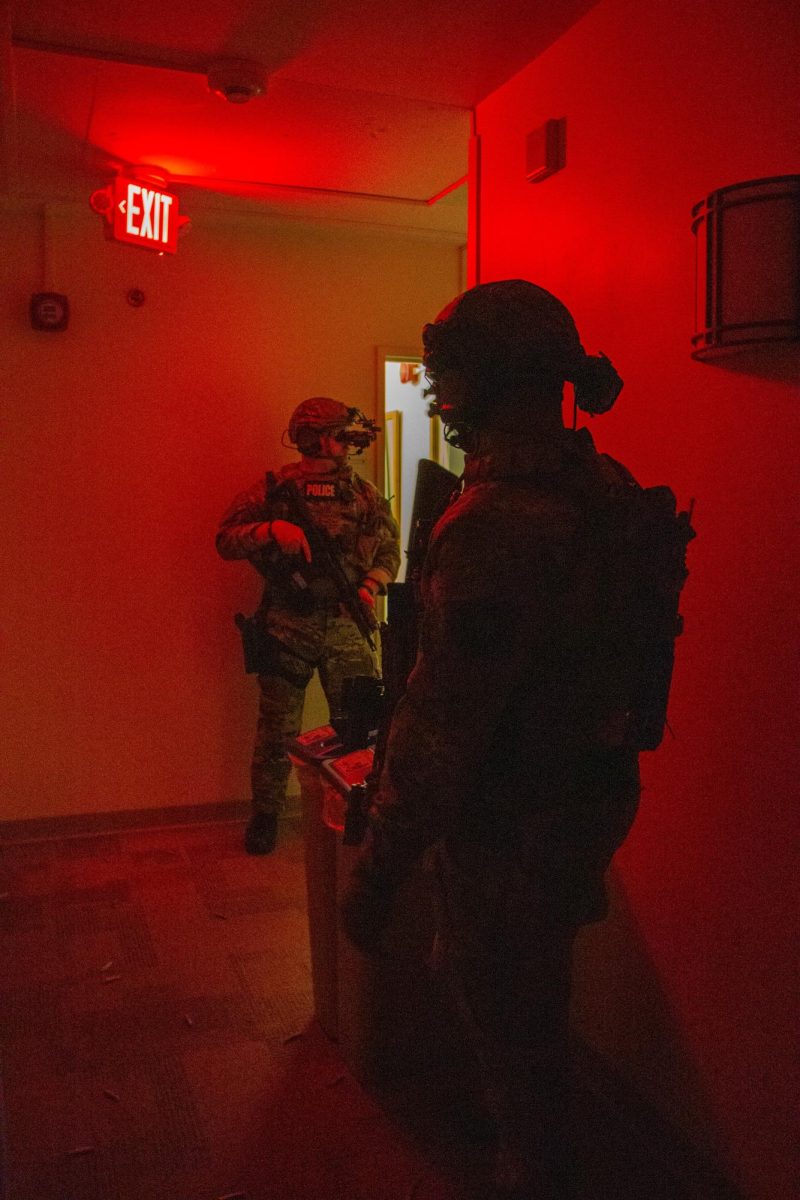By Tara Adhikari
On any given day in June, Grace St. George could be found in the 85 degree heat standing on the side of Main Street in downtown Woodstock, Ga., organizing protests, talks, and fundraisers for hundreds of other local residents in solidarity with Black Lives Matter.
St. George was one of several Principians to take to the streets over the summer, calling for an end to systemic racism following the deaths of George Floyd, Breonna Taylor, and Ahmaud Arbery. Now, in the aftermath of protests, some Principia students and faculty are finding ways to deepen their understanding of what antiracism looks like on a day to day basis.
Born to an Ethiopian father and white mother, it took St. George a long time to feel comfortable with her racial identity. “Being raised in a place where I didn’t particularly feel accepted, now [with] this whole global movement behind me, I felt like I could finally help others feel accepted,” says St. George.
Implementing antiracism at an institutional level and an individual level is “an ongoing journey,” says race relations expert and president emerita of Spelman College, Beverly Daniel Tatum, in an email interview with the Pilot. “It requires constant effort and attention to sources of inequity and the tendency to fall back into old habits, old patterns of behavior, because those are so well-socialized and so familiar.”

With protest coverage fading out of the news cycle and social media posts moving on to the upcoming election, St. George is worried the summer waves of protest could crash back into an ocean of silence.
“I feel like people of color have been screaming for a very long time and just now it’s starting to be noticed, and it gets noticed in waves. I would just appreciate after one of those waves if we could all start screaming,” says St. George.
Right now, “we’re in a moment in time that has the possibility to be a new revolution,” says Winnie Needham, Associate Professor of Educational Studies at Principia College. But she, too, is worried it may lag.
In an effort to keep the momentum going, Needham started an Everyday Antiracism book club, open to the entire Principia community. Every week around 20 participants meet over Zoom to discuss an essay out of ‘Everyday Antiracism: Getting Real About Race in School’ by Mica Pollock. At the end of each meeting, participants are asked to identify a personal goal centered on antiracism in their own lives.
Rachel Schutz, an enrichment student from Washington who works full time in the Christian Science practice, has learned from the sessions that being antiracist requires curiosity and deep listening.
“It’s antiracist to sometimes treat all people as human beings rather than [as] racial group members…but it’s also an important antiracist activity to recognize people’s real experiences as racial group members,” says Schutz, describing one of her biggest takeaways. “And this blew my mind because I realized it wasn’t binary. In every situation you have to ask the question ‘is treating them as a member of their racial or religious or ethnic group going to help them or harm them?’”
The Everyday Antiracism book club helps jump start this process of reflection, and helps participants sort through complex emotions like guilt and overwhelming personal responsibility.
Even though she is the one guiding the group through the book’s discussion questions, Needham finds that she is still learning, translating the book’s lessons into her role as an educator.
“The thing that I’m taking most note of are the ways in which I need to be alert to my assumptions regarding how I center my teaching around what’s familiar to me and what makes sense to me versus the need to constantly ask myself in what ways does what I’m doing leave somebody out when I don’t intend to leave them out,” she says.
While the book club is a new and crucial resource for antiracism on campus, forums designed specifically for minority students are noticeably absent. In fact, the Black Student Union, one of the only clubs with an explicit purpose “to support and serve the interests of minority students,” is not an active club this semester for the first time since its founding in 1971.
“Affinity organizations like BSU provide spaces where students who may feel marginalized on a campus can connect with others who are having similar experiences, and feel supported by them,” explains Tatum, the president of Spelman College who also wrote a national bestseller, ‘Why Are All the Black Kids Sitting Together in the Cafeteria? And Other Conversations About Race.’
In the book, Tatum covers the importance of racial peer groups to develop a positive sense of racial identity, particularly for people of color. “Everyone wants to feel seen, heard and understood by others and clubs and community organizations can be a source of that kind of affirmation,” she said, discussing the concept over email.
“You have to make a choice and a decision every moment of your life about whether you’re going to be antiracist or not.”
Billy Miller, Associate Professor of Sociology, is the club’s advisor and was the first president of Principia’s BSU as a student. Miller explains that this year no one was available to lead the group. While this is the first time the club has dissolved, the declining membership is part of what Miller has recognized as a larger ebb and flow pattern, with interest cresting when there is a discriminatory incident.
“You would think in these times it would be a priority,” says Miller.
Former BSU president John Anderson III, came to Principia from a predominantly Black community in Washington, D.C. Anderson describes growing up seeing Black teachers, Black principals and having school projects surrounding Black History Month. “It was always these small, little tokens of appreciation…I had around me that I didn’t notice until I got to Prin and it wasn’t there at all,” says Anderson.
When Anderson got to the College, not seeing many people of color in the classroom or even in pictures in the hallways made Anderson want to spread “that love for people of color.” Yet, Anderson describes a similar phenomenon as Miller.
“It was draining…to be Black Student Union President. To be a person of color trying to bring more people of color is a fight,” says Anderson, noting that getting white students to attend meetings was equally challenging.
Despite the effort required to get participation, meetings were a place for students to share common problems and experiences, a place to connect with other students of color typically scattered across campus. “[BSU] made us closer,” says Anderson.
In a 1973 Pilot article, Helen Scales, a student at the time, elaborated on the founding of BSU on Principia’s campus. The reason that Black students on campus felt the need for the organization was simple, she said.
“We were a very small minority amongst a very great majority, and the pressure was always on us to become more like the majority and less like ourselves with our own unique and beautiful identities,” she wrote. “If we were to fight against the constant pressure to assimilate, we had to come together to help each other deal with the problems of being Black at Principia.”
Fifty years later, being the only person of color in a room still comes with a lot of pressure. And with a campus where at least 62% of the student body is white, being the only person of color in a room is not a rare occurrence. More often than not, the burden falls on students of color to draw the line whenever an issue or joke about race arises.
Data from the Registrar’s Office shows that at least 62% of the student body is white. Only nationality data was provided for the international student body, which when divided out by geographic area, indicates that this number is likely higher. Graphic by Tara Adhikari.
Protesting injustice and joining Black Student Unions and book clubs like Everyday Antiracism are all antiracist actions, but antiracism education helps level the burden, ensuring everyone recognizes their responsibility to combat racist prejudices and policies.
At its core antiracism is about sustained daily action, says St. George, who led the protests in her hometown in Georgia.
“I think the word antiracism can be intimidating for some people, but really we should all consider ourselves antiracist, and really fulfilling that does take a lot of work.”
Schutz, one of the members of the Everyday Antiracism book club, echoes this sentiment. “You have to make a choice and a decision every moment of your life about whether you’re going to be antiracist or not.”





